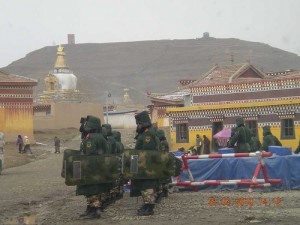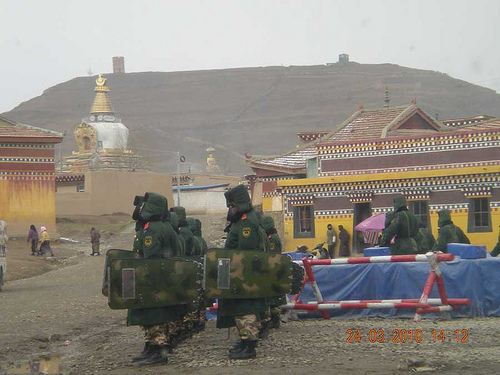A wave of self-immolation by young men in Tibet is a warning to China that per-emptive oppression can lead to desperate acts
Ed Douglas
guardian.co.uk, Monday 17 October 2011
In 1951, Phuntsok Wangyal was a young Tibetan communist determined to bring much-needed social and political reform to his homeland. He marched in the advance contingent of the People’s Liberation Army that reached Lhasa in 1951 and became the most powerful Tibetan figure in the new communist regime. For this reason, many Tibetans regarded him as a traitor.
Yet by 1958, Phuntsok Wangyal’s star was on the wane. Mao’s anti-rightist movement marked him out and he was called to Beijing to undergo self-criticism. His crime? Speaking publicly about how the majority Han discriminated against minorities in the new China. In 1960 he was jailed, along with most of his family, and tortured. Released in 1978, he gave up politics for academia.
Phuntsok Wangyal wasn’t quite finished though. In 2006, and in his mid 80s, he wrote a series of letters to Hu Jintao, general secretary of the Chinese Communist party, pointing out where China had gone wrong in Tibet– and reiterating the charge of Han chauvinism. He ended with a warning: “Comrade Jintao, a single matchstick is enough for the arsonist, but putting out the fire would take a great effort.”
The current wave of horrific self-immolations among young Tibetan men makes Phuntsok Wangyal’s warning seem horribly prescient. On Saturday, Norbu Damdul became the eighth Tibetan this year to set fire to himself. Like most of the others, he had until recently been a monk at Kirti monastery in Ngaba, a town in northwest Sichuan province, part of the former Tibetan region of Amdo.
According to the International Campaign for Tibet, Norbu Damdul shouted, “We need freedom and independence for Tibet,” before setting himself alight. His condition is unknown, but hospitals in Sichuan are known to be reluctant to treat political protesters. Earlier victims have faced beatings from local security forces, even as they put out the flames. A crowd that gathered at the scene of Norbu Damdul’s protest was dispersed at gunpoint.
This campaign of attempted or actual suicide is a new and horrific development. Suicide is morally problematic for Tibetan Buddhists, but as one local Tibetan put it, “to have to relinquish our identity and culture is to relinquish the point of living for [we] Tibetans, so the present repressive and punitive policies are literally tearing out the hearts of the Ngaba people”.

Why Ngaba? As in many towns across Tibet, protests against Chinese occupation during Beijing’s Olympic year were suppressed with ruthless determination. At least 10 monks from Ngaba’s Kirti monastery were shot dead by the authorities during those protests, and the crackdown hasn’t let up. There had been suicides among monks before, but public self-immolations first took place in late February 2009. A monk called Tapey set himself on fire in protest at religious restrictions. Security forces shot him before they doused the flames.
On 16 March, on the third anniversary of the 2008 uprising, the second such protest took place. Police beat Phuntsok Jarutsang, aged 20, as they smothered the dying monk’s body, leading to new riots in Kirti. Hundreds of monks were detained or expelled after their monastery was effectively besieged. Three men, one of them Phuntsok Jarutsang’s uncle, were imprisoned for between 10 and 13 years for assisting in his “crime”. The future of Kirti monastery is now in serious doubt.
So what was the match that lit this desperate new chapter in Tibet’s long resistance to Chinese rule? The answer lies partly in a dramatic graph published last week by Human Rights Watch comparing security spending in the different prefectures of Sichuan province. Kardze and Ngaba, with significant Tibetan populations, have roughly four times the amount spent on keeping the peace as other parts ofSichuan.
This didn’t use to be the case. The colossal increase in state security in these Tibetan regions began only in 2006, two years before the Olympics. If China feared embarrassing protests by its minorities while the world looked on, then this pre-emptive oppression made such protests almost inevitable – and set a fire that continues to burn in the most tragic way imaginable.
When the Tunisian street vendor Mohammed Bouazizi set himself on fire in March, it was a signal for revolution. By contrast,China’s grip on power in Tibet is unassailable. But the authorities would do well to consider their old ally Phuntsok Wangyal’s advice. They should begin protecting the rights of its minorities, and not regard them as an infuriating irritation.


